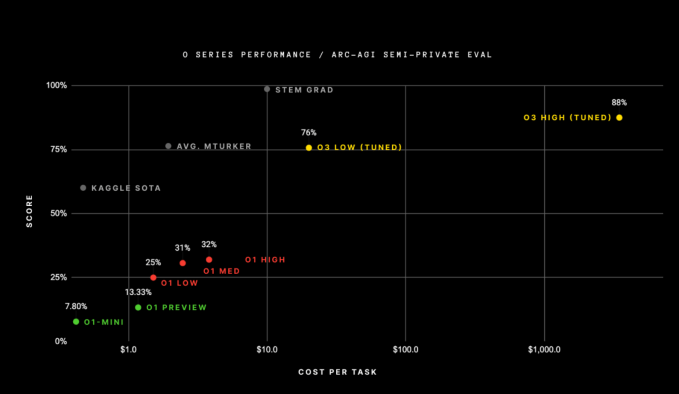A few weeks ago, I explored why AGI remains a distant goal, highlighting the gap between AI's pattern matching and human creative leaps like Darwin's theory of evolution. Now, OpenAI's new o3 model challenges some - but not all - of those assumptions.
What’s Different?
Instead of relying purely on pattern recognition from massive datasets, o3 uses a "chain of thought" approach - breaking down complex problems into steps and exploring multiple solution paths. o3 represents a notable step forward in AI problem-solving approaches. On a key reasoning test called ARC-AGI, o3 scored 87.5% while previous models barely hit 5%.
But Power Comes at a Price
Complex analysis costs $1,000+ (compared to $5 for previous models)
Tasks use enough energy to power a home for two months
What This Means for Business
o3 isn't for everyday tasks- think of it like a highly paid consultant. It can effectively tackle multi-step problems and would be best for high-stakes decisions where better answers justify higher costs, such as:
Complex market entry strategies
Major investment decisions
Product development scenarios
Risk analysis for critical projects
The Bottom Line
While o3 isn't AGI, it represents a significant shift in how AI solves problems, particularly in visual reasoning, mathematics, and coding. Instead of needing massive datasets to spot patterns, o3 can work with minimal examples and systematically reason through solutions.
When it launches in 2025, start identifying your organization's most complex, high-stakes decisions where better answers could justify the higher costs. The technology will likely become more affordable over time, but early access could provide a competitive edge.
Those are my Thoughts From the DataFront
Max
Notes
o3 is not yet publicly available. OpenAI has announced that o3-mini will be available to a wider audience by late January, with the full o3 model expected to follow shortly after
The ARC-AGI benchmark is specifically designed to test AI's ability to solve novel problems. Unlike typical benchmarks that assess knowledge or pattern recognition, ARC presents unique visual puzzles requiring genuine reasoning and adaptation. It demands the ability to formulate new solutions from scratch, pushing beyond mere pattern matching.




